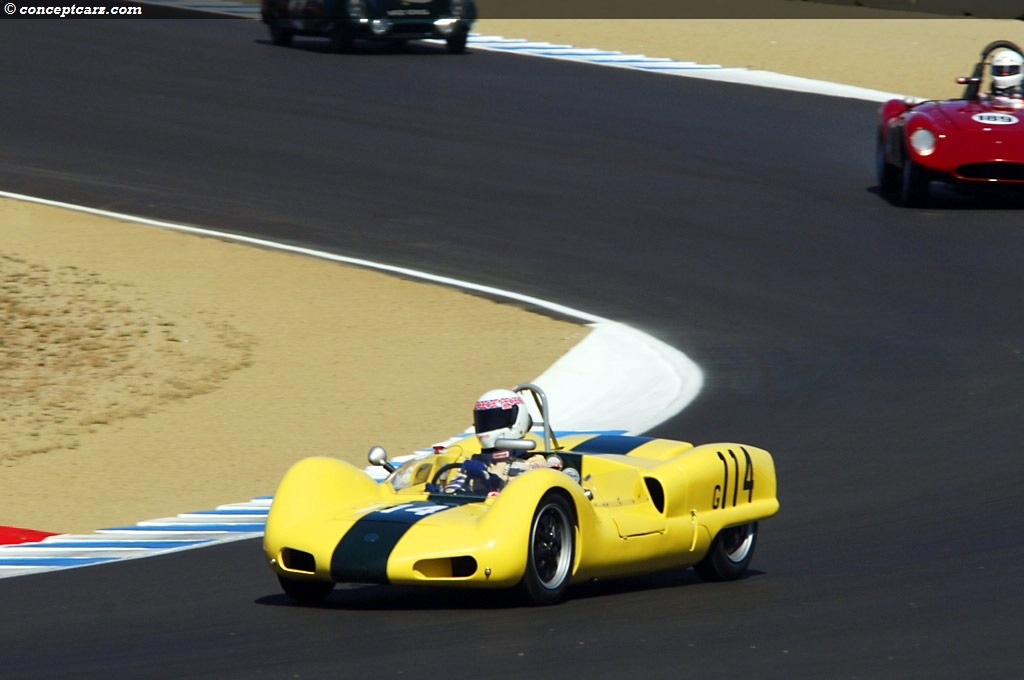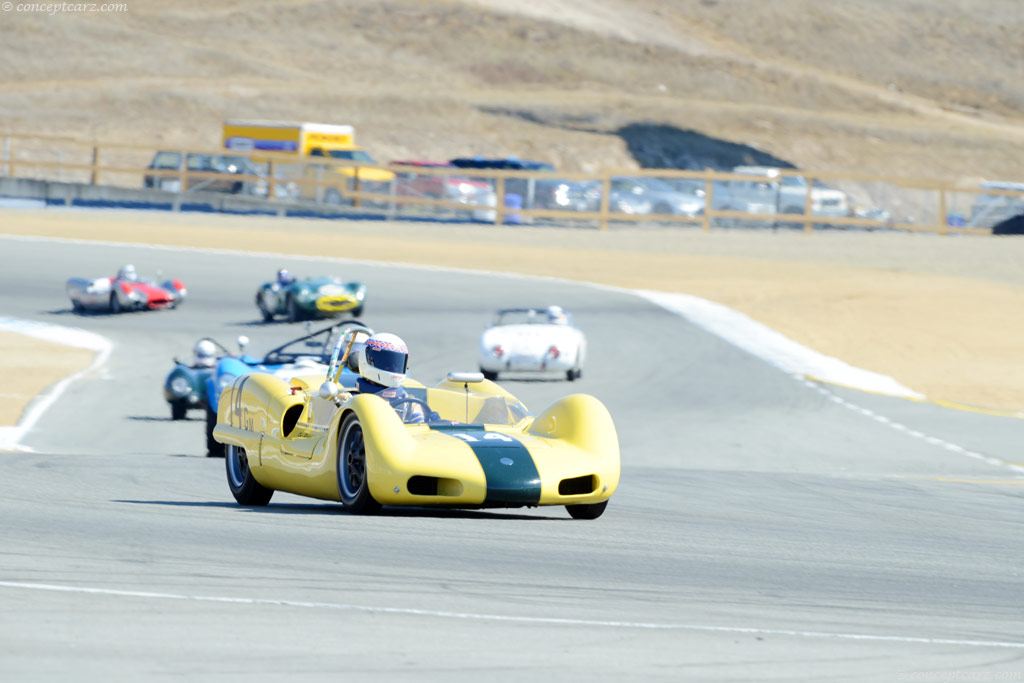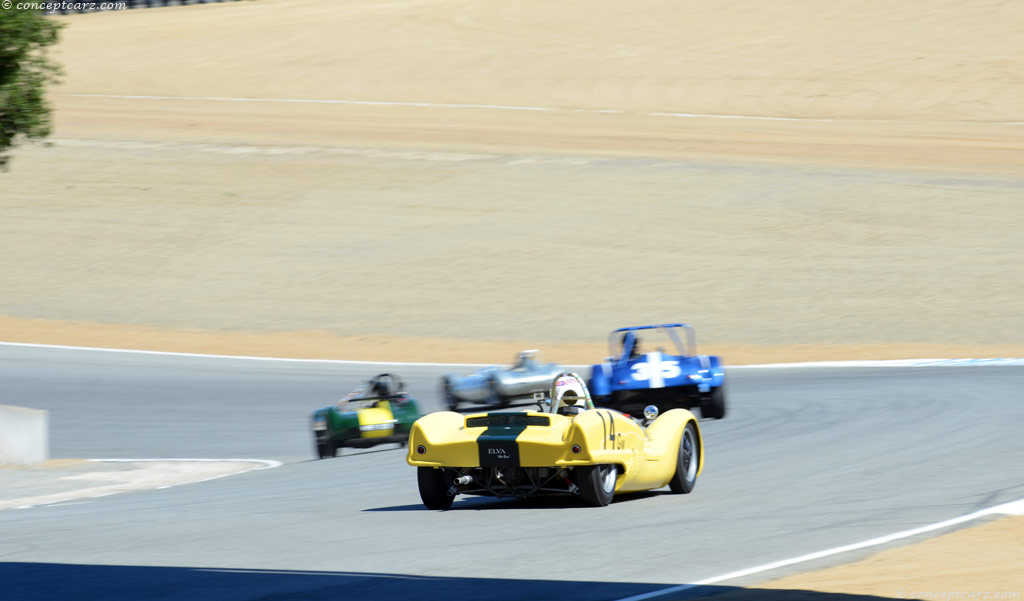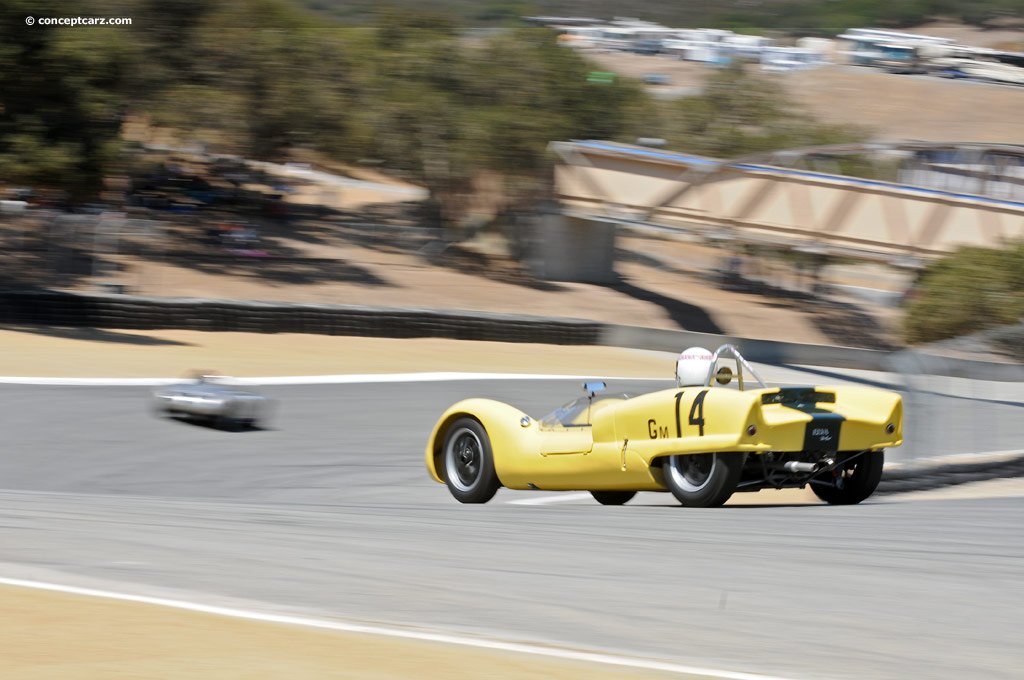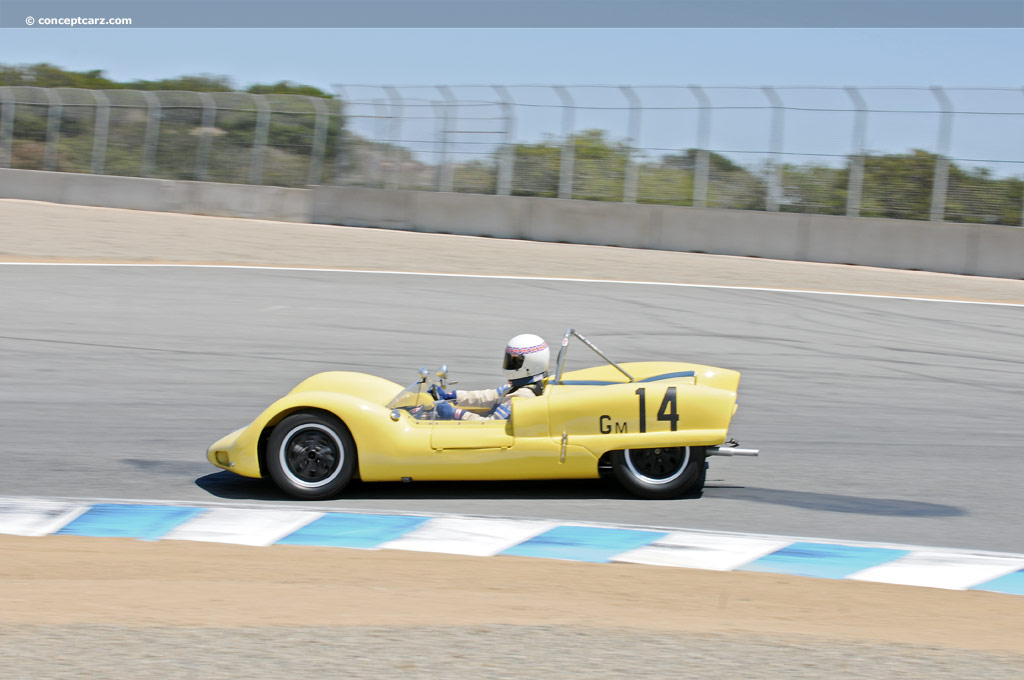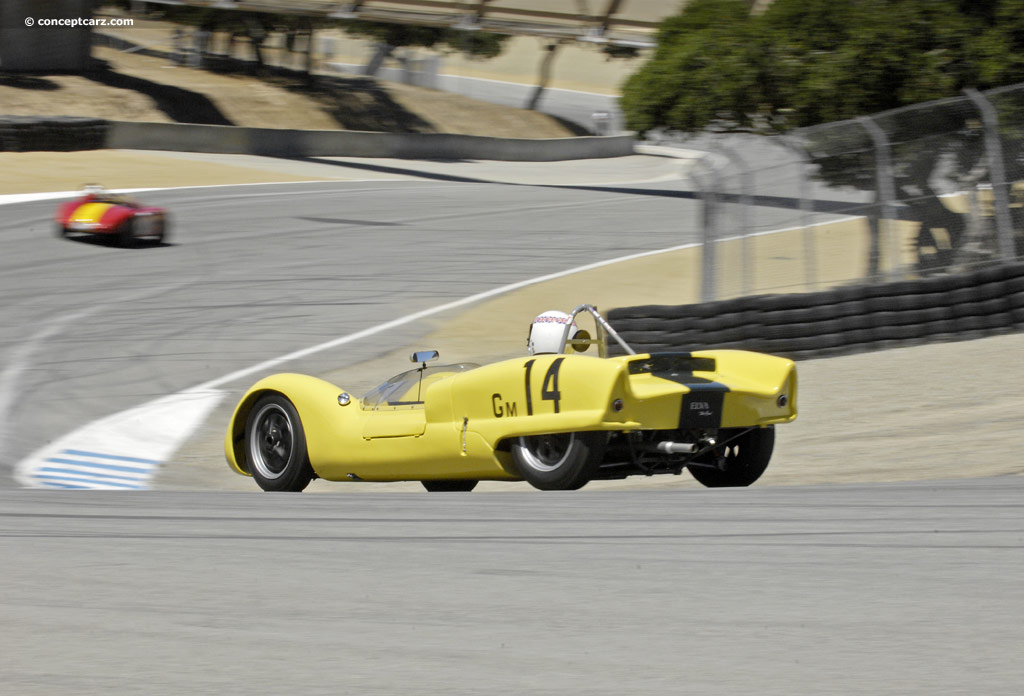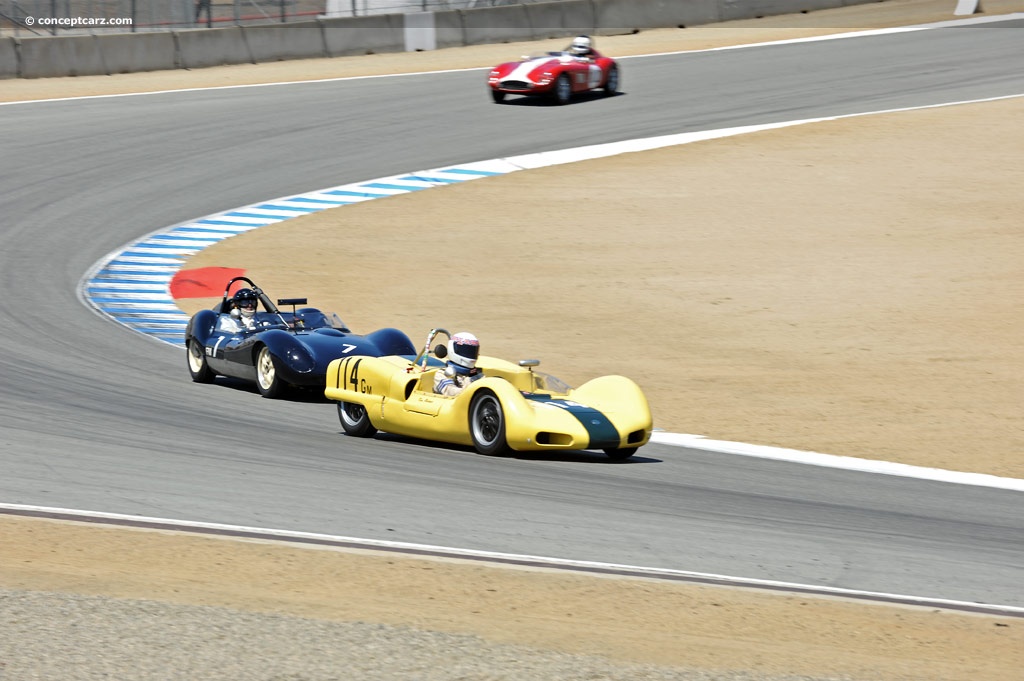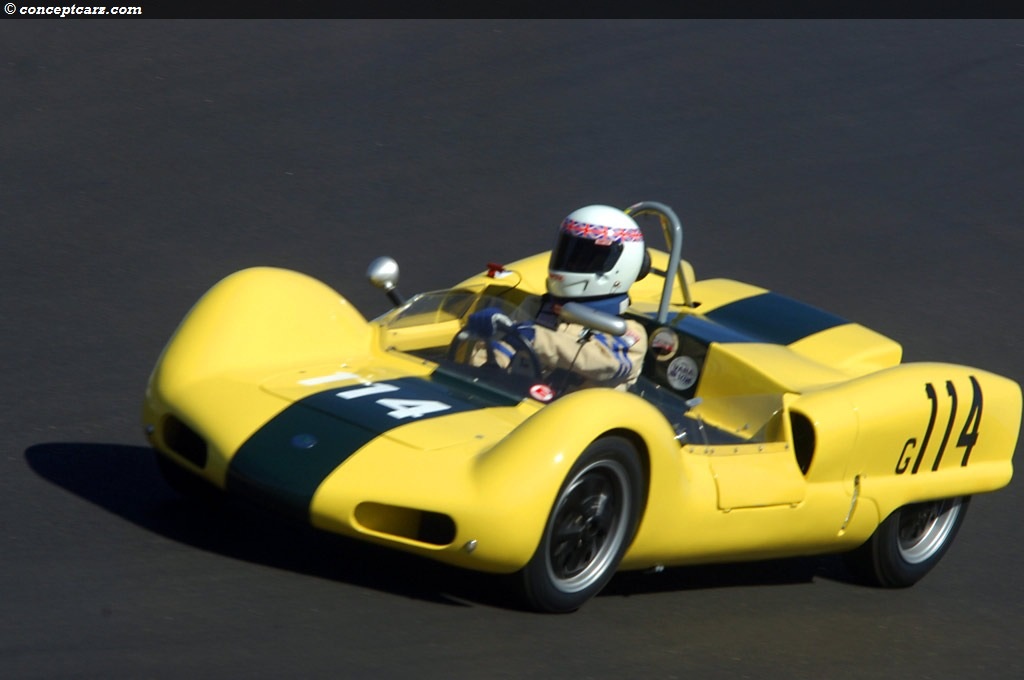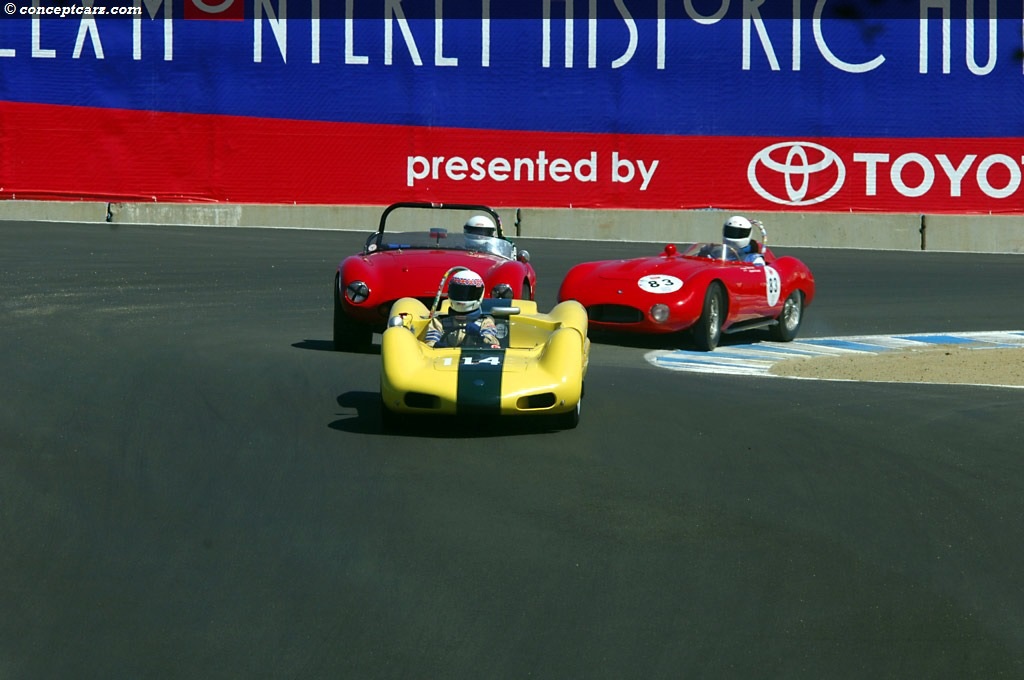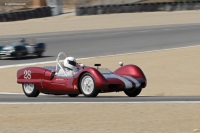Image credit: © conceptcarz.com (Reproduction Or reuse prohibited).
This 1962 Elva MKVI was the first of the ultra-low 'lay down' sports racers. This is chassis number 60/14 and is an original unmodified or molested example.
Of the twenty-eight MK6s made, 60/14 is a unique 'time capsule car.' The car was never modified, updated, or crashed. 60/14 was purchased by Mr. O'Brien in England on September 4th of 1962 and reportedly raced as a 'factory team car.' Although, this is doubtful as there was no 'Elva Factory Team'.
Harry Braswell, of Memphis, acquired the MK VI and a Lotus 23 on a trip to England. He raced the MK VI little and sold it to Dr. Louis Prieto in 1963. Louis drove the car sparingly that year and, in the fall, sold his import car dealership, Small Car Motors, to Phillip Herold, with the Elva as part of the deal.
Morris Caudle bought the car in the spring of 1964 and he and Mr. Harold raced it in eight events in 1964 and 1965. Its best finish was a third in G-Modified (in a field of twenty-one cars) at Mid-America, near St. Louis, Missouri. The car was then stored until 1980 when it was purchased and sympathetically restored by Rudy Rudolph.
60/14 is presented as it was raced in 1962, including its Elva yellow paint. Only safety equipment and a modern starter have been added.
The car was then stored until it was purchased in 1980 by Rudy Rudolph, who lived near Sacramento, CA. He restored the car and raced it in historic events on the west coast beginning in '82. Rudy sold the car
in 1995 to Hank Giffin, who raced it in 8 historic events on the East Coast.
Ken Palmer, the current owner, acquired the car in the fall of 2002, refurbished it, and began racing it in the spring of 2003. 60/14 is presented as it was raced in 1962. It left the factory 'Elva Yellow,' and other than safety modifications, only a modern starter has been substituted for the Lucas original.
Elva History
Elva, like Lotus, Lola, Cooper, and other British companies, started building cars in a garage. Frank Nichols, taken with the notion of building race cars built the first ELVA, the Mk I, in a garage in Bexhill, Sussex, England in 1955. Searching for a name for the car(s), he settled on Elva, a corruption of the French 'elle va' meaning 'she goes.'
With a succession of successful front-engined sports racers (Mk I through the Mk V) and the development of the Courier sports car, by 1960 ELVA was a significant player in the world of British race and sports car constructors.
With a reputation for reliability, easy maintenance, and competitiveness, ELVAS was very popular among American sports car racers. An ELVA Mk IV finished first in class at Sebring in 1959, and many American racers such as Mark Donahue got their competitive start in ELVA cars.
The 60s saw the down of the rear-engine revolution in race car design, and ELVA was on the starting line with their rear-engined formula junior and companion Mk VI sports racer. Courier sales boomed, and in 1963 on
ELVA Mk VII (Porsche engined) finished 1st at the Road America 500, leaving the Cobras, Ferraris, and everything else in its wake.
Alas, it was not to last. The American importer went belly-up owing ELVA more than they could absorb. Since the American Market had always been the backbone of ELVA's business, bankruptcy followed.
Elva built racing chassis for Porsche and the early McLaren V8 cars. Early Mclaren's were titled ELVA Mclaren and thus ELVA's genes survived through the ground-pounding CanAm era.
Mark VI Production
There were 28 Mark VI's built. Production began in December 1961, with the last car being completed in October 1962.
Most were powered by the Coventry Climax FWA 1100cc engines, although a few had Ford push-rods and a handful of other engines. Drum brakes were 'standard' and nearly all cars left the factory with them.
The Elva Mark VI was the first of the modern ultra-low 'lay down' sports racers. It made its debut at the Brands Hatch Boxing Day race in England, in December of 1961. where it promptly attached itself to Graham Hill's leading 3-liter Ferrari and was the hit of the race.
The Mark VI was embraced by US club racers in the 1100cc (G Modified class) as a competitor to the traditional front-engined Lotus XI's, Lola Mark I's, and other 1100cc cars. It enjoyed considerable success throughout the 1962 season but was soon eclipsed by the Lotus 23 and its successor Elva Mark VII.
Elva VI hit the silver screen when Elvis and Ann Margaret drove the car in the 1960s musical Viva Las Vegas. Hollywood needed a 'swoopy' race car and the Mark VI fit the bill. That car was owned by Dan Blocker of 'Bonanaza' fame and had been converted to 4-cylinder Maserati power.
Of the twenty-eight MK6s made, 60/14 is a unique 'time capsule car.' The car was never modified, updated, or crashed. 60/14 was purchased by Mr. O'Brien in England on September 4th of 1962 and reportedly raced as a 'factory team car.' Although, this is doubtful as there was no 'Elva Factory Team'.
Harry Braswell, of Memphis, acquired the MK VI and a Lotus 23 on a trip to England. He raced the MK VI little and sold it to Dr. Louis Prieto in 1963. Louis drove the car sparingly that year and, in the fall, sold his import car dealership, Small Car Motors, to Phillip Herold, with the Elva as part of the deal.
Morris Caudle bought the car in the spring of 1964 and he and Mr. Harold raced it in eight events in 1964 and 1965. Its best finish was a third in G-Modified (in a field of twenty-one cars) at Mid-America, near St. Louis, Missouri. The car was then stored until 1980 when it was purchased and sympathetically restored by Rudy Rudolph.
60/14 is presented as it was raced in 1962, including its Elva yellow paint. Only safety equipment and a modern starter have been added.
The car was then stored until it was purchased in 1980 by Rudy Rudolph, who lived near Sacramento, CA. He restored the car and raced it in historic events on the west coast beginning in '82. Rudy sold the car
in 1995 to Hank Giffin, who raced it in 8 historic events on the East Coast.
Ken Palmer, the current owner, acquired the car in the fall of 2002, refurbished it, and began racing it in the spring of 2003. 60/14 is presented as it was raced in 1962. It left the factory 'Elva Yellow,' and other than safety modifications, only a modern starter has been substituted for the Lucas original.
Elva History
Elva, like Lotus, Lola, Cooper, and other British companies, started building cars in a garage. Frank Nichols, taken with the notion of building race cars built the first ELVA, the Mk I, in a garage in Bexhill, Sussex, England in 1955. Searching for a name for the car(s), he settled on Elva, a corruption of the French 'elle va' meaning 'she goes.'
With a succession of successful front-engined sports racers (Mk I through the Mk V) and the development of the Courier sports car, by 1960 ELVA was a significant player in the world of British race and sports car constructors.
With a reputation for reliability, easy maintenance, and competitiveness, ELVAS was very popular among American sports car racers. An ELVA Mk IV finished first in class at Sebring in 1959, and many American racers such as Mark Donahue got their competitive start in ELVA cars.
The 60s saw the down of the rear-engine revolution in race car design, and ELVA was on the starting line with their rear-engined formula junior and companion Mk VI sports racer. Courier sales boomed, and in 1963 on
ELVA Mk VII (Porsche engined) finished 1st at the Road America 500, leaving the Cobras, Ferraris, and everything else in its wake.
Alas, it was not to last. The American importer went belly-up owing ELVA more than they could absorb. Since the American Market had always been the backbone of ELVA's business, bankruptcy followed.
Elva built racing chassis for Porsche and the early McLaren V8 cars. Early Mclaren's were titled ELVA Mclaren and thus ELVA's genes survived through the ground-pounding CanAm era.
Mark VI Production
There were 28 Mark VI's built. Production began in December 1961, with the last car being completed in October 1962.
Most were powered by the Coventry Climax FWA 1100cc engines, although a few had Ford push-rods and a handful of other engines. Drum brakes were 'standard' and nearly all cars left the factory with them.
The Elva Mark VI was the first of the modern ultra-low 'lay down' sports racers. It made its debut at the Brands Hatch Boxing Day race in England, in December of 1961. where it promptly attached itself to Graham Hill's leading 3-liter Ferrari and was the hit of the race.
The Mark VI was embraced by US club racers in the 1100cc (G Modified class) as a competitor to the traditional front-engined Lotus XI's, Lola Mark I's, and other 1100cc cars. It enjoyed considerable success throughout the 1962 season but was soon eclipsed by the Lotus 23 and its successor Elva Mark VII.
Elva VI hit the silver screen when Elvis and Ann Margaret drove the car in the 1960s musical Viva Las Vegas. Hollywood needed a 'swoopy' race car and the Mark VI fit the bill. That car was owned by Dan Blocker of 'Bonanaza' fame and had been converted to 4-cylinder Maserati power.
No auction information available for this vehicle at this time.
Recent Sales of the Elva MK VI
(Data based on Model Year 1962 sales)
Elva MK VIs That Failed To Sell At Auction
1962 Elva MK VI's that have appeared at auction but did not sell.
| Vehicle | Chassis | Event | High Bid | Est. Low | Est. High |
|---|
Vehicles With Comparable Market Values
Similar sales to the range.
1962 Elva MK VI
• Additional valuation insight and sales data• History
• Specifications
• Image gallery
• Other Elva MK VI model years
